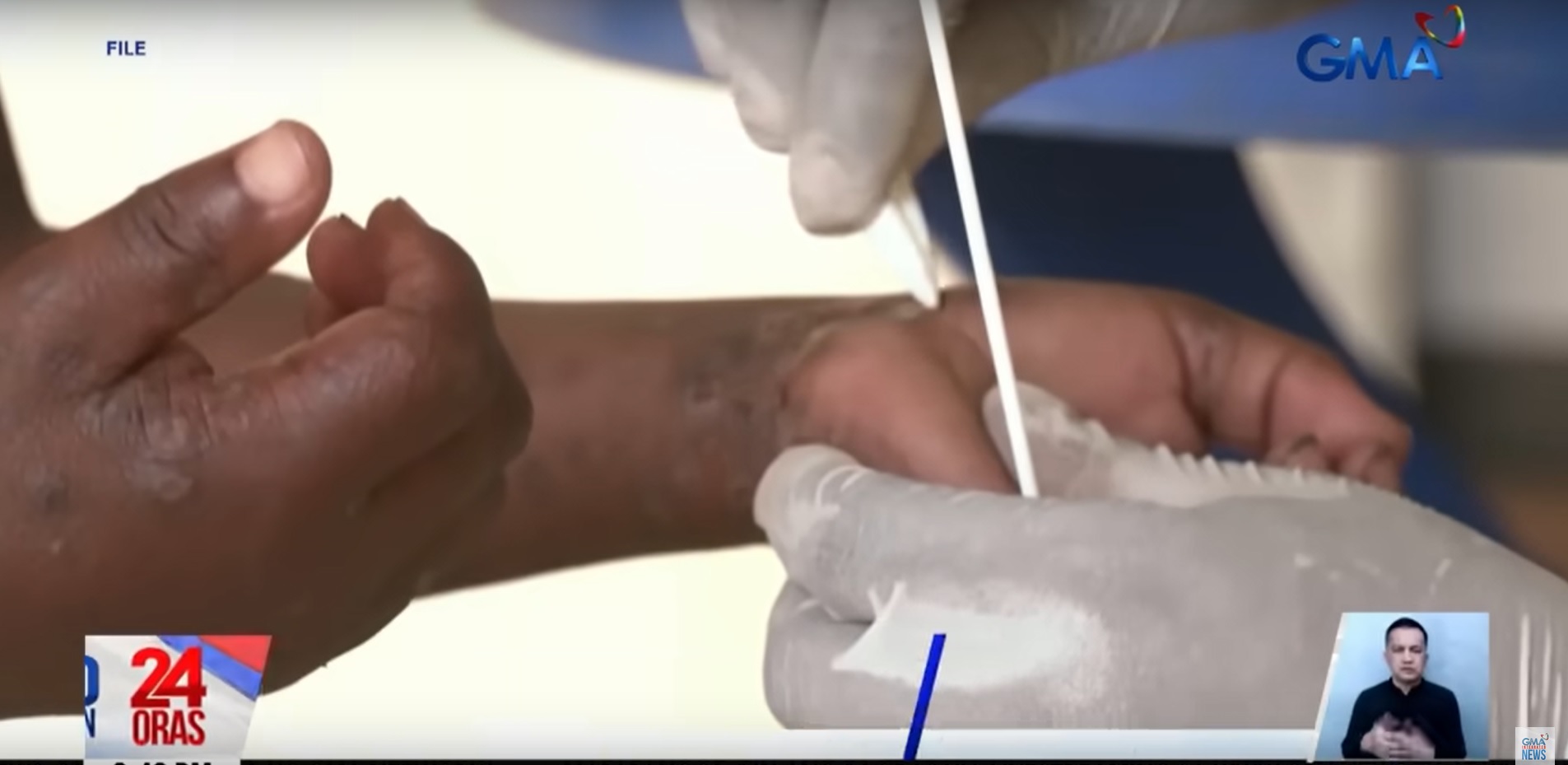PH detects 3 new mpox cases; active ones at 8

The active mpox cases in the country are now at eight as three new cases were detected in the country, the Department of Health (DOH) said Sunday.
The DOH said two of the additional cases were from Metro Manila, while the other one was from Calabarzon.
All of them tested positive with MPXV clade II, which is a milder form of the mpox virus.
The total mpox caseload in the Philippines now stood at 17 since July 2022.
Nine of these cases have long recovered since 2023, while the eight remained to be active cases waiting for symptoms to resolve.
Cases 15 and 16 had anonymous sexual encounters with more than one partner, while case 17 had close, skin-to-skin sexual contact with another person who had skin symptoms.
The 15th case was a 29-year-old male from the National Capital Region (NCR) whose symptoms started last August 21. He had rashes, swollen neck lymph nodes, sore throat, muscle pain, and weakness. His fever also began a day after.
This person did not travel within 21 days before the start of symptoms. He also reported one close contact, but engaged in anonymous sexual activities before symptom onset.
As of the moment, this case remained in home isolation.
Case 16, meanwhile, was a 34-year-old male also from NCR, whose symptoms started on August 27. He had rashes and blisters, and also had cough, fatigue, and swollen lymph nodes.
He also had no travel history 21 days before his symptoms started, but had sexual contact with three individuals. Contact tracing is ongoing.
The case is also currently completing his isolation at home after he was discharged from a health facility.
Lastly, the 17th case was a 29-year-old male from Calabarzon who started having fever on August 19. Shortly after, he developed rashes or vesicles on his face, thorax, arms, legs, and soles, and also had headache, muscle pain, and swollen neck lymph nodes.
He also had no travel history before the start of symptoms, but had close intimate contact with one sexual partner who may have had the same skin symptoms within the same period. This case reported two household close contacts.
The DOH said that local government units where these three new cases were from were already informed of the situation.
Common symptoms of mpox include a skin rash or mucosal lesions, which can last from two to four weeks. The rashes are accompanied by fever, headache, muscle aches, back pain, low energy, and swollen lymph nodes.
Anyone can get mpox, according to DOH, and the virus can be transmitted to humans through close and intimate contact with someone who is infectious, through contaminated materials like used clothes or utensils, or through infected animals.
The public were thus advised to use soap and water to kill the virus, and to use gloves when washing contaminated materials.
READ: New guidelines vs mpox
Aside from releasing the updated interim guidelines for the prevention, detection, and management of mpox in the Philippines, the DOH said that passengers going in and out of the country are now required to declare if they have had rashes, vesicles, or blisters in the past 30 days prior to their travel as part of the mpox surveillance.
If a traveler arriving in the Philippines was determined to be coming from a country listed by World Health Organization (WHO) as an outbreak area, has a history of exposure to an mpox case, or has any mpox signs or symptoms, the eTravel system will alert the Bureau of Quarantine and the Bureau of Immigration. —KG, GMA Integrated News




